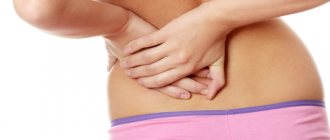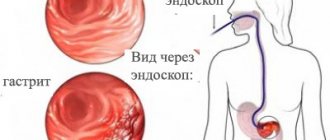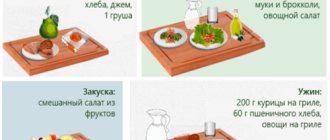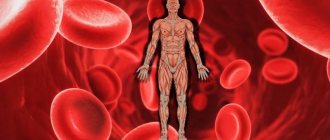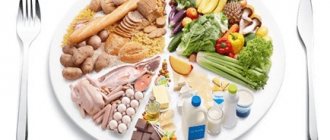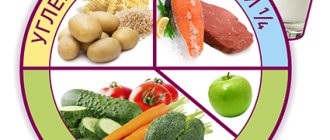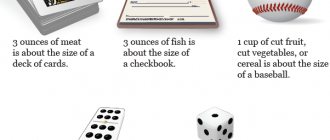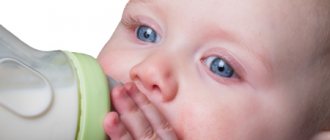Anemia (or anemia) is a lack of hemoglobin in the body. It is a pigment in red blood cells that contains iron. With its deficiency, tissues are less saturated with oxygen. The amount of hemoglobin decreases when the body, for one reason or another, develops a deficiency of the iron necessary for its production. This may be due to chronic blood loss or various diseases, as well as a diet poor in iron-containing foods. For iron deficiency anemia, an examination is always prescribed to identify its causes, as well as diet and, if necessary, drug treatment.
General rules
Anemia occurs against the background of various etiological factors, the main of which are deficiency of iron, folic acid or vitamin B12 .
In clinical practice, anemia caused by iron deficiency (IDA) accounts for almost 85% of cases of the total anemia. Iron deficiency anemia is secondary and develops against the background of various pathological and physiological conditions. It is based on a disruption of the processes of hemoglobin with a simultaneous decrease in the total volume of red blood cells caused by a long-term deficiency of the microelement iron (Fe) in the body.
The main reasons for the development of IDA include:
- chronic blood loss from various organs and tissues (menstrual and gastrointestinal blood loss);
- nutritional deficiency (more often in newborns and young children), as well as in adults with an unbalanced diet with limited protein - mono-diets, vegetarianism;
- increased body need for iron (intensive growth, pregnancy and lactation);
- impaired absorption of iron in the intestine.
The level of iron in the blood plasma is determined by the ratio of the processes of synthesis and breakdown of red blood cells. On average, in the human body, the content of iron in bound form varies from 3 to 5 g. In the process of hematopoiesis, the body uses iron from food, and when it is deficient, reserves from the depot (liver, spleen, bone marrow) are activated. The natural way to replenish the body with iron is through food. Clinical symptoms of iron deficiency anemia occur in cases where the intake of iron from food (2 mg/day) is less than the level of its loss. However, even with a diet enriched with foods high in iron, its absorption does not exceed 2.5 mg per day, since the absorption of iron from food is less than 20%.
There are two forms of iron: heme and non-heme. It is heme iron that is part of hemoglobin and is relatively well absorbed (20-30%), and other food components have practically no effect on the process of its absorption. Heme iron is found only in products of animal origin (meat, fish, offal).
Non-heme iron has extremely low bioavailability - its absorption is at the level of 3-5%. It is found mainly in products of plant origin (cereals, legumes, fruits, berries) and its digestibility is influenced by many factors. Thus, it is almost impossible to provide the body’s daily requirement through food (for men 10 mg/day with a loss level of 1 mg/day and for women 18 mg/day with a loss level of up to 2 mg/day).
However, despite the impossibility of completely compensating for iron deficiency in the body with food, diet for anemia is an essential component of the complex treatment of patients with IDA. At the same time, it is important to consider not so much the iron content in foods, but the form in which iron is contained in foods.
Diet for iron deficiency anemia
The basis of therapeutic nutrition is dietary Table No. 11 (diet with a high protein content). The diet provides the physiological need for macro- and micronutrients, calorie content is about 3500 Kcal (120-130 g of proteins, 70-80 g of fats and 450 g of carbohydrates). Free liquid - 2.0 liters, sodium chloride content - 10-12 g.
The diet is enriched with foods rich in iron - red meat, meat by-products, fish, seafood, canned fish, butter, vegetable oil, chicken eggs, vegetables, honey, fruits, various cereals, drinks. In the diet, animal products containing iron in the form of heme (veal, beef tongue, rabbit meat, beef) are of particular value and it is with them that the diet should be enriched. The inclusion of by-products, in particular liver, is not of particular value, since the absorption of iron in the form of ferritin and transferrin , in which iron is contained in the liver, is much lower than in meat.
The diet also includes foods containing non-heme iron - cereals, fruits, legumes, vegetables. A feature of the absorption of iron in non-heme form is the dependence of the process on the content of substances in the diet that potentiate or inhibit iron absorption. Factors that enhance the absorption of iron from bread, eggs, and cereals include, first of all, ascorbic acid , so the diet should contain products such as rosehip decoction, fruit drinks, citrus juice, fruits and berries, as well as compotes with the addition of 25-50 mg of citric acid /ascorbic acid.
Potentiates the absorption of iron and copper. Products containing copper include: dried figs, green vegetables, cherries, apricots, seaweed, and brown algae. gluconate and glycerophosphate to food products .
Products that contain phosphate , phytate , oxalate , tannate , lectins , and pectins . These substances are found mainly in bran, cereals, various grains, bread, corn, and rice. Coffee and red wine (contain polyphenolates ), tea ( tannin ), bicarbonate and sulfate mineral waters, as well as milk, which contains calcium, are subject to restrictions. Considering the negative effects of such products, their consumption should be limited or consumed separately from other products (in a separate meal). Fatty foods are also subject to restrictions, since fats interfere with the absorption of iron. Iron deficiency anemia does not provide for any restrictions in the culinary processing of foods, with the exception of frying, since this process uses a lot of fat and produces oxidation products that negatively affect the body.
Nutrition for anemia in the elderly
The most common causes of the development of IDA in elderly people is nutritional deficiency caused by dental problems, low socio-economic status, acquired malabsorption syndrome (for diseases of the stomach, liver, intestines, pancreas), and long-term use of medications.
The symptoms and treatment, nutrition of this category of patients are not fundamentally different, however, the diet is adjusted taking into account the age needs and lifestyle of the patient. If you have dental problems, products containing heme iron are recommended to be consumed in pureed form. As a rule, the hemoglobin in adults normalizes after 2-2.5 months; however, it is recommended to be on a diet and continue taking iron supplements for at least another 3 months until the body’s iron reserves are completely replenished and the ferritin reaches 30 ng/l.
Microelements to enhance hematopoiesis
The following microelements stimulate the formation of red cells and hemoglobin:
- zinc: offal, beef, mushrooms, eggs, beans, cereals, yeast, Dutch cheese;
- copper: cereals, black currants, watermelon, cranberries, strawberries, beans, liver, beef, horseradish;
- cobalt: beans, cereals, nuts, fish, offal, milk, gooseberries, parsley, apricots, cherries, pears, raspberries;
- manganese: beans, greens, cereals, pumpkin, raspberries, beets, black currants, cranberries.
Microelements are very important in the treatment and prevention of anemia
Authorized Products
Diet therapy is based on the inclusion in the diet of foods containing the maximum amount of heme iron: red meat (beef), offal (beef tongue, beef and chicken liver, chicken stomachs and hearts), meat products (sausage, ham, frankfurters), fish and fish products , seafood, butter and vegetable oil.
Soups and first courses are prepared in rich meat or fish broth.
Among dairy products, it is recommended to include low-fat fermented milk products and cottage cheese in the diet.
To prepare a side dish, you can use various types of cereals and pasta.
It is allowed to include in the diet various vegetables and fruits in any culinary preparation, especially those with a high content of ascorbic acid (citrus fruits, black currants, rose hips, chokeberries), as well as dried fruits - raisins, dried apricots, figs, prunes, sunflower seeds, pumpkins.
Dark honey is especially useful, since the copper, iron, manganese and fructose it contains increases the absorption of iron in the intestines. It is preferable to consume dark varieties of honey as they contain more.
For drinks, you should drink rosehip decoction, vegetable and fruit juices, and mineral water.
Table of permitted products
| Proteins, g | Fats, g | Carbohydrates, g | Calories, kcal | |
Vegetables and greens | ||||
| boiled cauliflower | 1,8 | 0,3 | 4,0 | 29 |
| boiled potatoes | 2,0 | 0,4 | 16,7 | 82 |
| boiled carrots | 0,8 | 0,3 | 5,0 | 25 |
| salad pepper | 1,3 | 0,0 | 5,3 | 27 |
| boiled beets | 1,8 | 0,0 | 10,8 | 49 |
| dill | 2,5 | 0,5 | 6,3 | 38 |
Fruits | ||||
| apricots | 0,9 | 0,1 | 10,8 | 41 |
| oranges | 0,9 | 0,2 | 8,1 | 36 |
| cherry | 0,8 | 0,5 | 11,3 | 52 |
| grapefruit | 0,7 | 0,2 | 6,5 | 29 |
Berries | ||||
| cranberry | 0,5 | 0,0 | 6,8 | 26 |
| gooseberry | 0,7 | 0,2 | 12,0 | 43 |
| Rowan | 1,5 | 0,1 | 10,9 | 50 |
| currant | 1,0 | 0,4 | 7,5 | 43 |
| rose hip | 1,6 | 0,0 | 14,0 | 51 |
Nuts and dried fruits | ||||
| prunes | 2,3 | 0,7 | 57,5 | 231 |
Cereals and porridges | ||||
| buckwheat (kernel) | 12,6 | 3,3 | 62,1 | 313 |
| oat groats | 12,3 | 6,1 | 59,5 | 342 |
| cereals | 11,9 | 7,2 | 69,3 | 366 |
| Wheat groats | 11,5 | 1,3 | 62,0 | 316 |
Bakery products | ||||
| wheat bread | 8,1 | 1,0 | 48,8 | 242 |
| whole grain bread | 10,1 | 2,3 | 57,1 | 295 |
Confectionery | ||||
| jam | 0,3 | 0,1 | 56,0 | 238 |
Raw materials and seasonings | ||||
| honey | 0,8 | 0,0 | 81,5 | 329 |
Dairy | ||||
| kefir 3.2% | 2,8 | 3,2 | 4,1 | 56 |
| cream 15% (low fat) | 2,3 | 15,0 | 3,6 | 161 |
| sour cream 15% (low fat) | 2,6 | 15,0 | 3,0 | 158 |
Cheeses and cottage cheese | ||||
| cottage cheese | 17,2 | 5,0 | 1,8 | 121 |
Meat products | ||||
| lean pork | 16,4 | 27,8 | 0,0 | 316 |
| pork liver | 18,8 | 3,6 | 0,0 | 108 |
| beef | 18,9 | 19,4 | 0,0 | 187 |
| beef liver | 17,4 | 3,1 | 0,0 | 98 |
| calf liver | 19,2 | 3,3 | 4,1 | 124 |
| mutton | 15,6 | 16,3 | 0,0 | 209 |
| rabbit | 21,0 | 8,0 | 0,0 | 156 |
| ham | 22,6 | 20,9 | 0,0 | 279 |
| liver pate | 11,6 | 28,9 | 2,5 | 317 |
| beef stew | 14,1 | 17,4 | 0,0 | 214 |
Sausages | ||||
| smoked sausage | 16,2 | 44,6 | 0,0 | 466 |
| blood sausage | 9,0 | 19,5 | 14,5 | 274 |
| beef sausages | 11,4 | 18,2 | 1,5 | 215 |
Bird | ||||
| chicken liver | 20,4 | 5,9 | 1,4 | 140 |
| turkey | 19,2 | 0,7 | 0,0 | 84 |
| turkey liver | 19,5 | 22,0 | 0,0 | 276 |
| goose liver | 15,2 | 39,0 | 0,0 | 412 |
Eggs | ||||
| chicken eggs | 12,7 | 10,9 | 0,7 | 157 |
Fish and seafood | ||||
| brown algae | 1,7 | 0,6 | 8,3 | 43 |
| pink salmon | 20,5 | 6,5 | 0,0 | 142 |
| Red caviar | 32,0 | 15,0 | 0,0 | 263 |
| cod roe | 24,0 | 0,2 | 0,0 | 115 |
| pike caviar | 17,3 | 2,0 | 0,0 | 87 |
| squid | 21,2 | 2,8 | 2,0 | 122 |
| shrimps | 22,0 | 1,0 | 0,0 | 97 |
| salmon | 19,8 | 6,3 | 0,0 | 142 |
| mussels | 9,1 | 1,5 | 0,0 | 50 |
| seaweed | 0,8 | 5,1 | 0,0 | 49 |
| herring | 16,3 | 10,7 | — | 161 |
| cod (liver in oil) | 4,2 | 65,7 | 1,2 | 613 |
| trout | 19,2 | 2,1 | — | 97 |
Oils and fats | ||||
| vegetable oil | 0,0 | 99,0 | 0,0 | 899 |
| butter | 0,5 | 82,5 | 0,8 | 748 |
| olive oil | 0,0 | 99,8 | 0,0 | 898 |
| * data is per 100 g of product | ||||
Nutrition for anemia: recipes
To increase the level of hemoglobin in the blood, you need to use the following recipes:
- Vitamin mixture. To prepare it you will need 0.5 kg of prunes, walnuts, raisins and dried apricots. All these products are passed through a meat grinder and mixed with honey (0.35 kg). The mixture is stored in the refrigerator under a closed lid in a glass jar. You need to take it 2 tablespoons before meals, 3 times a day.
- Juice with beets and carrots. Mix 50 g of beet juice, 100 g of carrot juice and a tablespoon of honey. All components must be combined and drunk before lunch.
- Cranberry-apple juice. To prepare the drink, you need to mix half a glass of cranberry and apple juice, add a tablespoon of beet juice. You need to drink this drink 4-5 times a week.
- Delicious flour to increase hemoglobin. Walnuts and buckwheat (a glass each) are ground into powder using a coffee grinder. Add 100 g of honey to the powder mixture. Take the medicine orally, a tablespoon 3 times a day, a few minutes before meals.
- Vitamin cocktail. To prepare it, you will need to mix the juice of pomegranate, carrots, apples, beets and grapes. To sweeten the drink, you can add honey to it.
Fully or partially limited products
Fatty meats and fish, animal and cooking fat, culinary, spices, cakes and cream pies, fatty and hot sauces are completely excluded from the diet.
Limit foods rich in calcium (parsley, milk and dairy products), tannin and caffeine (strong tea, coffee, Coca-Cola, chocolate) as they slow down the absorption of iron.
Alcohol intake is completely excluded, since ethyl alcohol affects the liver and disrupts the absorption of flavocins and iron.
Table of prohibited products
| Proteins, g | Fats, g | Carbohydrates, g | Calories, kcal | |
Nuts and dried fruits | ||||
| nuts | 15,0 | 40,0 | 20,0 | 500 |
Cereals and porridges | ||||
| wheat bran | 15,1 | 3,8 | 53,6 | 296 |
Confectionery | ||||
| cake | 3,8 | 22,6 | 47,0 | 397 |
Chocolate | ||||
| chocolate | 5,4 | 35,3 | 56,5 | 544 |
Raw materials and seasonings | ||||
| mayonnaise | 2,4 | 67,0 | 3,9 | 627 |
Dairy | ||||
| milk | 3,2 | 3,6 | 4,8 | 64 |
| sour cream 30% | 2,4 | 30,0 | 3,1 | 294 |
Cheeses and cottage cheese | ||||
| cheese | 24,1 | 29,5 | 0,3 | 363 |
Meat products | ||||
| pork fat | 1,4 | 92,8 | 0,0 | 841 |
Oils and fats | ||||
| cooking fat | 0,0 | 99,7 | 0,0 | 897 |
| rendered pork fat | 0,0 | 99,6 | 0,0 | 896 |
Alcoholic drinks | ||||
| white dessert wine 16% | 0,5 | 0,0 | 16,0 | 153 |
| vodka | 0,0 | 0,0 | 0,1 | 235 |
| cognac | 0,0 | 0,0 | 0,1 | 239 |
| liquor | 0,3 | 1,1 | 17,2 | 242 |
| beer | 0,3 | 0,0 | 4,6 | 42 |
Non-alcoholic drinks | ||||
| cola | 0,0 | 0,0 | 10,4 | 42 |
| coffee | 0,2 | 0,0 | 0,3 | 2 |
| Pepsi | 0,0 | 0,0 | 8,7 | 38 |
| black tea | 20,0 | 5,1 | 6,9 | 152 |
| energy drink | 0,0 | 0,0 | 11,3 | 45 |
| * data is per 100 g of product | ||||
Sample diet menu No. 11.
- First breakfast: fresh cabbage salad with apples and sour cream, omelette, oatmeal with milk, tea with milk.
- Second breakfast: cheese, tea.
- Lunch: borscht in meat broth with sour cream, fried chicken with boiled rice, compote.
- Afternoon snack: rosehip decoction.
- Dinner: meat zrazy stuffed with onion and egg, carrot puree, buckwheat casserole with cottage cheese, tea.
- At night: kefir.
A medical diet is prescribed only by the attending physician , who has full knowledge of the medical history of a particular patient.
For children
Nutrition for anemia in children has a number of features. Iron deficiency in the body of a newborn child is determined by the level of iron supply to the fetus during intrauterine development and the iron content in the mother's breast milk or in formulas after birth. With the standard development of full-term children, depletion of iron reserves occurs by the 4-5th month of life, in premature infants - by the 3rd month of life. From this period, the child’s body depends only on the amount of iron supplied with food.
The best option is to continue breastfeeding the child, since, despite the low iron content in breast milk (1.5 mg/l), its bioavailability is at the level of 60%. This is facilitated by the form of iron-containing protein as lactoferrin .
Along with breast milk, the child’s diet during this period should be expanded through complementary feeding. However, most parents use unadapted dairy products (kefir, milk) for these purposes, which contributes to the development of iron deficiency in the child’s body due to the appearance of microdiapedetic intestinal bleeding. This is especially true for children who are on early artificial feeding with a late (after 8 months) introduction of meat complementary foods.
When artificially feeding, especially in high-risk children (premature babies, twins, low-weight babies), it is recommended to use adapted infant formulas fortified with iron - Similac with iron , Detolact , Nutrilon 2 , Abbott , Nestogen , Samper Baby 1 and 2 . In full-term babies, these mixtures are recommended to be used from the 4th month of life, in premature babies - from the 2nd month.
The inclusion of iron-fortified complementary foods (instant cereals, fruit and vegetable purees, fruit juices) in children's diets significantly increases the intake of iron from food. It is extremely useful to include in the diet of a child from 5-6 months of age meat and vegetable products, complementary foods - canned meat and vegetable products, which are produced by various brands, "Samper", "Gerber", "Beach-Nut", "HiPP", Heinz", "UniMilk", "Kolinska" ").
To cover physiological needs, older children need to receive with food:
- 1-3 years - 1 mg/kg iron per day;
- 4-10 years - 10 mg/day;
- after 11 years - 18 mg/day.
Girls require special attention during pubertal development, which is associated with the onset of menstruation, and for many, poor nutrition due to the desire to lose weight. Therefore, during this period, it is especially important for parents to monitor the child’s diet and include all the necessary food products. At the same time, it is recommended to take iron-containing medications. For young children - in the form of syrup/drops - Lek (syrup), Hemofer (drops), Actiferrin (drops, syrup), Ferrum Maltofer (drops, syrup). For teenagers - Ferrum Lek (chewable tablets at a dosage of 100 mg).
Symptoms of the disease
Symptoms depend on the degree of development of the disease. The onset of the disease is indicated by the following signs: decreased concentration; fatigue; memory impairment; decreased appetite; dizziness; decreased performance; lethargy; irritability; splitting of nails; the skin becomes dry. As the anemic condition worsens, these symptoms become more pronounced. Already at the latent stage, patients indicate such subjective symptoms as: dry mucous membrane of the tongue; tongue tingling; change in taste - patients prefer salty, sour and spicy foods; difficulty swallowing; sensation of a foreign body in the throat when swallowing; cardiopalmus. During the examination, the doctor also notes the first objective signs of anemia: atrophied papillae of the tongue; sensation of itching and burning in the vulva with iron deficiency anemia in women; cheilitis (a disease that manifests itself as damage to the lips in the form of their blanching, maceration with transverse cracks and a bright red border at the line where the lips close).
Doctors note that the severity of symptoms depends not only on the degree of anemia, but also on the age of the patient and the duration of the disease. Over time, the symptoms expand. The following changes are noted:
Ø From the side of the skin. The skin acquires a characteristic greenish tint and becomes pale. A blush quickly appears on the cheeks, the skin loses its elasticity, becomes wrinkled, and cracks.
Ø On the hair side. Hair also becomes dry, brittle, acquires a grayish tint and loses its shine, becomes thinner, and quickly turns grey.
Ø From the side of the nails. The nail plates become thinner, lose their shine, become flat, and in more severe forms of anemia, koilonychia is observed when the nails take on a concave shape.
Ø From the muscular system. Muscle weakness is a symptom that is characteristic only of anemia caused by iron deficiency.
Ø From the mucous membranes. The membranes of the digestive tract, respiratory and genital organs atrophy.
Ø From the senses. In severe forms of the disease, the sense of smell changes, the patient acquires perverted taste habits, for example, he begins to eat chalk, ice, lime, raw cereals, etc.
With adequate treatment, in particular with the help of iron supplements, such symptoms quickly disappear.
Comments from nutritionists
Strict vegetarianism is one of the risk factors for the development of both latent iron deficiency (a decrease in the iron content in the depot and its transport level in the absence of changes in hemoglobin and red blood cells) and iron deficiency anemia. Due to the long-term, almost complete absence of foods containing heme iron in the diet, many vegetarians develop iron deficiency. Non-heme iron found in grains and vegetables has low absorption.
An additional negative aspect of eating vegetarians is the higher fiber content in food, which makes it difficult to absorb iron. Therefore, those who practice this type of diet can be recommended to enrich their diet with foods rich in ascorbic/citric acid, which significantly improve the absorption of iron. To prevent the development of anemia, it is recommended to periodically take iron-containing drugs, one of which is the combination drug Ferro-Folgamm , containing anhydrous iron sulfate, cyanocobalamin , folic and ascorbic acid .
How to increase iron absorption?
In order for iron to be better absorbed by the body, you must use the following recommendations:
- Meat and liver should be eaten with vegetables, beets and carrots are especially useful.
- Ascorbic acid helps iron be better absorbed, so it is useful to wash down cereals, fish and meat dishes with orange juice.
- Consuming 50-70 g of honey per day will allow iron to be better absorbed in the body. Honey is also useful for boosting immunity.
- Experts recommend that patients with anemia eat pears, which increase the concentration of hemoglobin in the blood.
It is enough to follow these simple recommendations for anemia to recede or not appear at all.
Reviews and results
- “... I suffer from heavy periods for 5-6 days, so this diet therapy is a salvation for me. After 3-4 weeks of taking iron supplements and dietary nutrition, everything returns to normal, but I am always afraid of my critical days”;
- “...My daughter and her friends went on some special diet to lose weight. Despite my persuasion, I ate this way for more than a month, until I started fainting. The doctor was called. The result is anemia, low hemoglobin, headaches, and changes in the skin. They prescribed a diet, I buy all the products containing iron, but I’m afraid that after recovery she won’t find another diet.”
